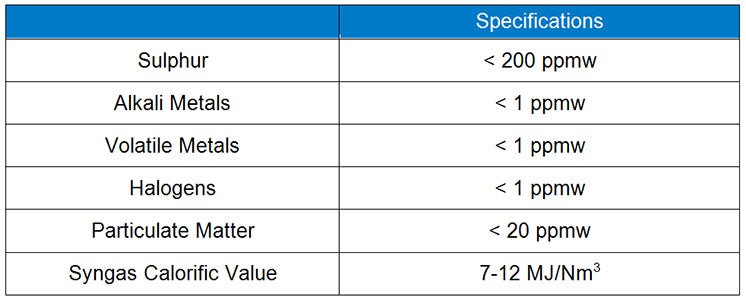
Environmental Benefits
The superior environmental performance and benefits of a plasma gasification facility include:
- -Lower emissions
- -Beneficial use of byproducts and a reduction in the amount of material that ultimately must be landfilled
- -Lower greenhouse gas footprint
Lower Emissions:
A plasma gasification combined cycle power plant or reciprocating engine plant is completely different than an incineration plant from an emissions perspective. Where incineration technology burns MSW to create energy, Westinghouse Plasma Gasifier uses extreme heat from its Plasma Torches, to break down the MSW to its molecular constituents including hydrogen and carbon monoxide, the two building blocks of syngas.
In a combined cycle or reciprocating engine application, syngas from a Westinghouse Plasma Gasifier is cleaned up to a specification similar to natural gas. It is this clean syngas that is burned in a gas turbine or reciprocating engine to make power. Emissions from this sort of plant will be similar to a natural gas fired power plant.
Syngas, after clean-up can meet the following specifications as an example:

Lower Greenhouse Gas Footprint:
Independent analyses have compared the lifecycle greenhouse gas emissions of a plasma gasification combined cycle power plant with the emissions from a state of the art incineration facility and a landfill with energy capture facility.
Results show that the Plasma Gasification Combined Cycle system provides the lowest greenhouse gas emissions of the evaluated systems for waste disposal. Studies also concluded that the lifecycle greenhouse gas emissions were almost equivalent to the state of the art natural gas combined cycle power plant.
Reduced emissions, reduced amounts of solid wastes that need to be landfilled and reduced greenhouse emissions – plasma gasification has better environmental performance in all areas.
Beneficial Byproducts vs. Bottom Ash and Fly Ash:
Westinghouse Plasma Gasification facility produces vitrified slag as a byproduct that is inert and safe to use as aggregate or for use in other applications. Slag will not contaminate soil or drinking water.
In a Westinghouse Plasma Gasifier, particulate is removed from the syngas downstream from the gasifier. However, the particulate can be recycled back into the gasifier for destruction (and also for further energy recovery) and therefore does not become a byproduct that requires disposal.
Instead of slag, incineration plants produce bottom ash and flyash. The flyash requires special disposal and in many jurisdictions is considered hazardous waste.
Assuming that particulate is recycled back into the gasifier, less than 2% of the material introduced needs to be sent to landfill. In comparison, about 20% to 30% of the waste processed in an incinerator must be sent to landfill.